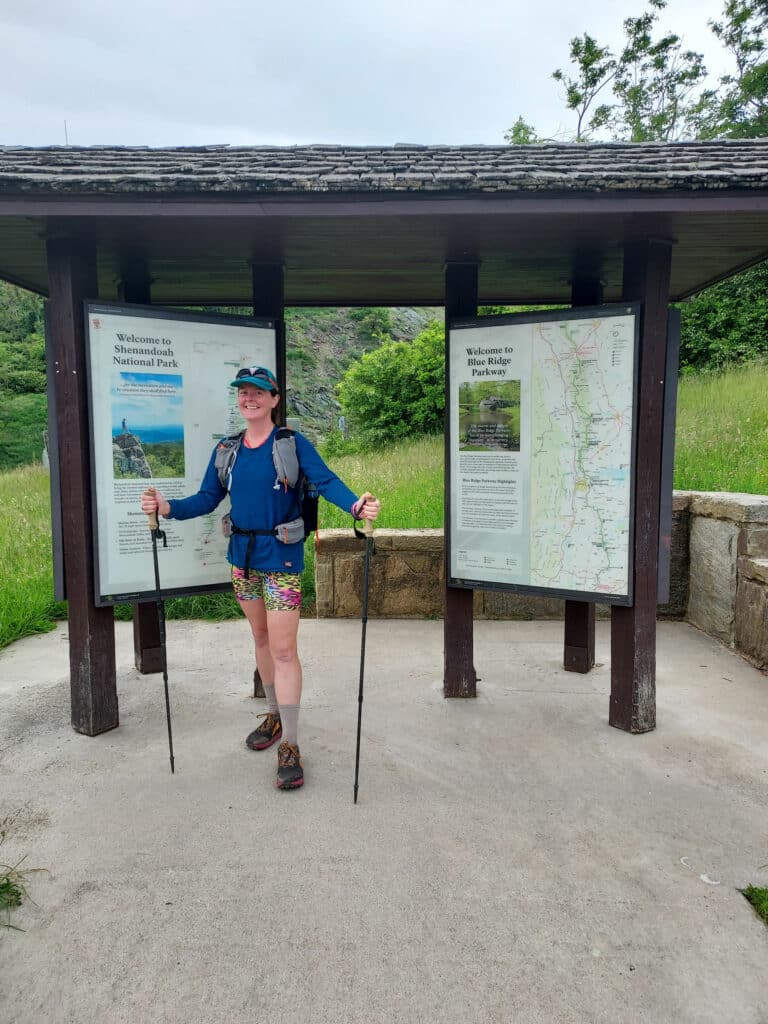by Hannah Morgan
Ronnie “Jigger” Willis sits on his front porch in a red rocking chair, surveying his dusty community of Roda, the once-booming coal camp in Wise County, Va. As he recounts tales from up and down his holler, he pauses every few minutes to allow the roar of a passing coal truck to fill the conversation.
Jigger grew up in this community, raised a family, and now enjoys retirement from his 28-year-long career working underground in the coal mines. But the town he has always known as home has recently decayed into two dozen inhabited houses, all covered by a thick layer of coal dust. And flying through Roda at breakneck speeds are trucks hauling up to 150,000 pounds of coal, leaving a swirl of black dust behind them on Jigger and his neighbors.
With the recent boom of coal, peaking in the mid-1990s, increased demand has resulted in more pressure on companies to mine, process, and ship coal in greater amounts at faster rates. This has resulted in coal companies employing cheaper methods of mining, such as mountaintop removal in the Appalachian Mountains, to power the plants that produce approximately 50 percent of electricity consumed in the United States.
But while the dollar amounts on our electric bills stay low from this cheap fuel, these costs are being shifted onto communities that surround coal mining operations. And in Appalachia, some of these costs take the form of overweight coal trucks that cover communities in black dust, ruin bridges and highways, and cause deadly accidents.
———-
Grassroots Resistance
Since 1983, Pam Maggard has lived in Sassafras, Ky., where she and her husband have worked hard for what they call their own “American Dream” lifestyle. Their small community is populated by many elderly people and until recently, life was peaceful for the Maggards and their neighbors. Then a mine opened up nearby, and they began to see more and more coal trucks on the narrow road that runs by their house.
Maggard watched as roads deteriorated from the constant heavy traffic. Many of her neighbors were frightened to drive on the narrow roads knowing their car would lose any battle with a coal truck. And as Maggard watched, truck drivers took over the roads so recklessly that “children literally dodged coal trucks as they trick-or-treated on Halloween night,” she said.
In 2006, Maggard realized she was not alone in her complaints about the trucks when she was invited to a small community meeting. With the help of Kentuckians for the Commonwealth, a statewide citizens’ organization, they began to organize. First, they wrote letters and lobbied the town to enforce a slower speed limit in the residential parts of Sassafras where trucks were known to speed by houses. When they saw no results, they worked with others to craft a piece of legislation that would better enforce existing weight limits. The bill was modeled after one that was successfully passed in West Virginia in 2003.
Maggard says there are situations similar to hers in Sassafras all across the Appalachian coalfields. “Same story, different holler,” says Maggard.
———-
Bills and Sit-Ins
Patty Sebok knows how to dodge coal trucks with skill she has acquired over a lifetime of navigating Route 3 in West Virginia. Living on a main haul road in coal country means Sebok anticipates speeding trucks coming at her around every bend. And since she first got involved fighting coal trucks in the 1980s, she has been continuously targeted by coal truck drivers who perceive her attempts to protect her community as a direct threat to their jobs.
Sebok has always lived with the dust and noise from passing coal trucks in her community, Prenter Hollow, W. Va. Bottlenecked traffic and speeding coal trucks presented a constant hazard for Sebok and her neighbors. But the West Virginia communities were inspired to rise up against the iron grip of the coal industry in 2001 when a series of fatal accidents involving coal trucks made statewide headlines and residents realized they had no choice but to fight back. “There had been deaths from trucks before, but it was never this bad,” says Sebok.
A particular accident in Hernshaw, W. Va., sparked a new wave of action in 2001. When an elderly couple, on their way home from a funeral, turned into a relative’s driveway, an overweight truck came up behind them. Due to the excess haul weight, the truck driver was unable to stop soon enough. He tried to swerve off the road, but in doing so, he pushed the car into the opposite lane, directly in the path of another oncoming coal truck. The passengers were killed from the impact of the two trucks.
The family’s death outraged the community, and residents began to organize for better enforcement of coal trucks to prevent more accidents. In September 2001, over 70 Hernshaw residents gathered in a church basement to hatch a plan for protecting their community. The citizens soon joined up with other allies including Coal River Mountain Watch, the Ohio Valley Environmental Coalition, Citizen’s Coal Council, We the People, and even the United Mine Works of America, for a statewide campaign.
The campaign began with a petition drive to collect 5,000 signatures supporting changes in state weight-enforcement of overweight trucks. Community members also began working with elected officials, including Delegate Mike Caputo, to defeat the coal industry’s attempts to raise weight limits to 120,000 pounds for trucks hauling coal on public roads. The coalition had an incredible victory in 2002 when they defeated the bill to increase weight limits and another victory in 2003 when they passed legislation to better enforce existing weight limits.
The recent campaign was not the first time that Sebok has taken a stand to protect her community. Sebok first got involved in 1989 as part of an earlier grassroots fight in Prenter Hollow against trucks from a Massey Energy strip mine site.
Massey Energy began mining in Prenter Hollow in 1989, claiming that their surface mine sites would only be operational for a very short time, says Sebok. But as the mining work continued long past the due date, community members grew frustrated by the passing trucks that covered their homes and lungs in a thick layer of dust. When Massey ignored requests to manage the dust, Sebok and a handful of women blocked the road, preventing all coal trucks from passing through their community. For weeks the blockade continued, supported by a growing number of residents joining hands in the road.
The United Mine Workers of America then approached the residents, pledging to support collective action against Massey. The union had been unsuccessfully trying to organize Massey workers, but to no avail, so the miners and women joined forces against the company. Sebok and the original blockaders led a group of 500 miners, women, and other residents to block a Massey haul road. “It was the first time that coal had been stood up to since the union was strong,” says Sebok.
———-
Behind the Wheel
A.C. Blevins has been owner and operator of A.C. Blevins Trucking in Appalachia, Va., since 1981. Blevins and his seven drivers haul coal from underground and surface mine sites to be weighed, washed, processed, and burned in power plants. Blevins himself drives trucks during most days, then spends his nights maintaining his fleet.
Working a 60-hour, five-day week, many truck drivers make around $50,000, says Blevins. He pays his drivers well to keep them on the roads, and he is hard-pressed to find drivers who can pass a drug test, due to the widespread use of prescription drugs and marijuana in the coalfields. But when he finds good drivers, Blevins tries his best to satisfy them.
Truck drivers are given plenty of incentives to haul over the legal weight limit, namely that the more coal they haul per day, the more money they make. In addition, if a driver receives a ticket for hauling overweight, Blevins will pay the fine for his drivers, but this is not a common practice. Fines for hauling overweight can be up to $1,000 per infraction. Even with the added bonuses Blevins gives his drivers, he has trouble keeping a driver for more than a year, as it is hard work with long hours.
Drivers are under scrutiny by state and local police to haul the legal limit of coal. The limit varies from state to state, but it ranges from 88,000 to 110,000 pounds, depending on the type of road. Police judge how much coal is being hauled based on a window placed two-thirds of the way up the walls of the bed. If coal is visible through the window, that means the truck is overloaded. However, due to the influence of the coal industry, overloaded trucks are overlooked.
By the time trucks roll off the weighing docks, they are carrying as much as 150,000 pounds per load, which is far beyond the legal or safe limit.
Some municipalities, including Appalachia, Va., have devised their own methods of catching overweight trucks, such as installing cameras on Main Street at such a height that can view the truck beds from above. According to Appalachia Town Manager Fred Luntsford, this method has proved effective when employed. However the camera is not always being watched.
“These guys need to make a living, but they are operating within a community, which means they need to respect the people who live nearby,” says Luntsford. As town manager, he has tried to cut down on dust by using a town street washer, yet despite his efforts, the municipality still lays under a coat of black film.
According to Jigger, who lives in Roda, a holler near the town of Appalachia, a coal company was cited in 2004 by the state-operated Department of Mines, Minerals and Energy for generating excess dust in the community near their mining operations. Instead of paying fines, the community negotiated with the company to buy a truck washer to help keep down the dust as trucks exited the mines. Despite widespread community pressure, the company never kept the promise to purchase the washer and instead kept the money and continued the problem.
“What we need to do is haul all this coal out of the mines on train, like they did until the 1990s,” says Jigger. “Instead of all these filthy, dangerous trucks ravaging our communities, we could have smooth-running coal trains. And if we’re going to have trucks, then they should be washed down and obey the speed limit.”
The balance of creating jobs and protecting the environment is a delicate one when dealing with the coal-dependent, mono-economy of the Appalachian coalfields. While the brave few have spoken out against such social and environmental injustice occurring in Appalachian communities, still more residents are tied to the coal industry in such a way that will inhibit their power to protect their families and their future.







